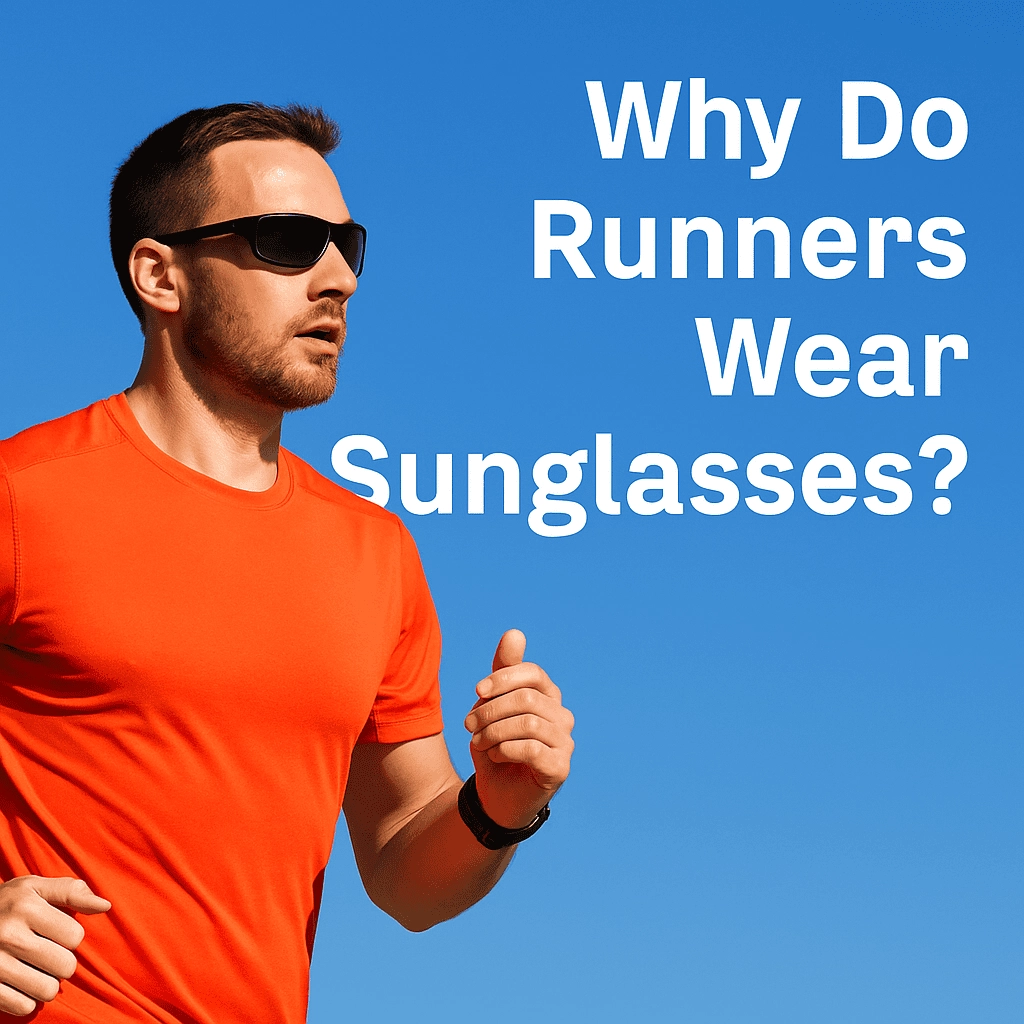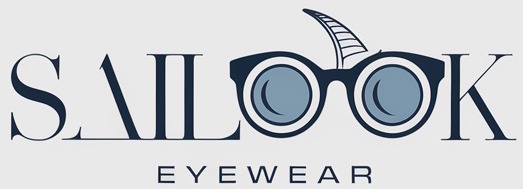Running in the open air can be exhilarating, but it comes with its own set of challenges, particularly when it comes to protecting your eyes. One often overlooked aspect of running gear is sunglasses. Wearing the right pair can protect your eyes from the harsh UV rays of the sun, reduce glare, and enhance your overall performance. In this article, we will explore why runners should wear sunglasses, the various benefits, and how to select the right pair for your needs.

1. Why Should Runners Wear Sunglasses?
● Running without sunglasses can expose your eyes to UV rays, which can lead to long-term damage, such as cataracts or macular degeneration. Sunglasses act as a protective barrier against these harmful rays, shielding the delicate skin around your eyes.
● Aside from protection, sunglasses can enhance your running experience by improving visibility and comfort. Whether you’re running on a bright, sunny day or in an area where the light can be blinding, sunglasses provide a solution to avoid squinting and eye fatigue.
● But here’s the kicker: by reducing eye strain, sunglasses allow you to focus more on your stride and breathing, contributing to a better overall running performance.
2. What Are the Key Features of Running Sunglasses?
● Lens Types: One of the primary factors to consider when choosing running sunglasses is the type of lens. Polarized lenses reduce glare, which is especially useful when running by water or on bright days. Photochromic lenses adapt to changes in light, ensuring you’re comfortable regardless of whether you’re running in the sun or shade. UV-blocking lenses are essential to protect your eyes from harmful rays.
● Frame Materials: The frame of running sunglasses should be lightweight and durable. Materials such as plastic, titanium, and nylon provide the perfect balance between comfort and sturdiness. The frame should also be flexible enough to avoid causing discomfort during long runs.
● Adjustability: Proper fit is crucial. Running sunglasses should have adjustable temples or nose pads that allow you to customize the fit to your face. A secure fit prevents the glasses from slipping during your run and reduces the chance of irritation or discomfort.
| Feature | Polarized Lenses | Photochromic Lenses | UV-Blocking Lenses |
|---|---|---|---|
| Benefit | Reduces glare | Adapts to lighting | Blocks UV rays |
| Best for | Bright days, water | Changing light | All-day use |
| Fit | Comfortable | Fits a wide range | Comfort-focused |
| Price Range | Mid to High | High | Affordable to High |
3. How Do Sunglasses Protect Your Eyes from UV Damage?
● Sunglasses block harmful ultraviolet (UV) rays from reaching your eyes. UV rays can cause damage to both the surface and the internal structures of the eye. Over time, repeated exposure can lead to vision problems like cataracts and macular degeneration.
● UV protection is not just a convenience, it is a necessity for anyone who spends time outdoors. A good pair of sunglasses can block up to 99% of UV light, which can significantly reduce the risk of eye diseases caused by prolonged exposure.
● To put it into perspective, the World Health Organization estimates that up to 20% of cataract cases are caused by UV exposure. Wearing sunglasses during your runs can help prevent this potentially serious eye condition.
| Eye Condition | Effect of UV Exposure | Prevention Method |
|---|---|---|
| Cataracts | Clouding of the lens | UV-blocking lenses |
| Macular Degeneration | Deterioration of the retina | Sunglasses with UV protection |
| Photokeratitis | Eye sunburn | Polarized lenses |
4. Can Sunglasses Improve Your Running Performance?
● Sunglasses provide more than just protection. They help reduce glare, a major cause of distractions while running. Whether you’re running on a paved path or an open trail, the sun’s glare can interfere with your vision. Sunglasses minimize this distraction, helping you focus more on your performance.
● Sunglasses also reduce the chances of headaches caused by excessive squinting. With a comfortable and clear view, you can maintain your rhythm without interruptions caused by the sun.
● What’s the real story? By improving comfort and visibility, sunglasses can directly impact your running efficiency, allowing you to maintain optimal performance for longer.
| Feature | Benefit | Effect on Running Performance |
|---|---|---|
| Reduced Glare | Improved visibility | Fewer distractions, increased focus |
| Headache Prevention | Reduced eye strain | More comfortable runs |
| UV Protection | Eye safety | Reduced long-term damage |
5. How Do Sunglasses Help with Weather Conditions While Running?
● In windy conditions, sunglasses protect your eyes from dust and debris, preventing irritation. This is especially important when running through wooded areas or along windy streets.
● On hot, sunny days, sunglasses reduce the intensity of sunlight, helping keep you cool and focused. They provide shade, making it easier to focus on your run without being distracted by intense sunlight.
● Sunglasses can also help during rainy or snowy conditions by preventing water droplets from obstructing your vision. The lenses are designed to allow optimal visibility, no matter the weather.
| Weather Condition | Sunglasses Benefit | Example |
|---|---|---|
| Windy | Protects against debris | Trail running in forests |
| Hot & Sunny | Reduces sunlight intensity | Running on bright days |
| Rainy/ Snowy | Prevents water obstruction | Cold weather running |
6. What Materials Are Best for Running Sunglasses?
● The frame material of running sunglasses plays a crucial role in comfort and durability. Lightweight materials such as acetate, TR90, and titanium offer a blend of flexibility, strength, and comfort. Acetate is particularly known for its durability, while TR90 is known for being ultra-lightweight.\
● Another important consideration is the lenses. Polycarbonate lenses are highly resistant to impact, making them a popular choice for athletes. They are lightweight and provide clear, sharp vision even in extreme conditions.
● For runners, comfort is just as important as durability. Materials such as rubberized temples and nose pads are commonly used to ensure that the sunglasses stay in place, no matter how intense your run gets.
| Frame Material | Pros | Cons |
|---|---|---|
| Acetate | Durable, stylish | Can be heavier |
| TR90 | Lightweight, flexible | Not as stylish as metal |
| Titanium | Strong, corrosion-resistant | More expensive |
| Polycarbonate | Impact-resistant, lightweight | Prone to scratches |
7. How Can Sunglasses Improve Your Safety as a Runner?
● Sunglasses increase your visibility, especially when running near traffic. Bright, reflective lenses can help drivers notice you sooner, keeping you safer on the road.\
● In poorly lit environments, sunglasses with light-adjusting features or those designed for low-light conditions can help you see and be seen. This is especially important during early morning or late evening runs.
● Additionally, sunglasses protect your eyes from potential hazards like insects, dust, and other debris.
| Safety Feature | Benefit | Example |
|---|---|---|
| Increased Visibility | Helps drivers spot you sooner | Running on busy roads |
| Protection from Debris | Prevents eye irritation | Running on trails |
| Better Vision | Improves sight in low light | Early morning runs |
8. What Are the Most Popular Brands of Running Sunglasses?
● Some of the top brands for running sunglasses include Oakley, Nike, and Adidas. These companies are known for producing high-quality sunglasses that offer advanced features such as UV protection, polarized lenses, and lightweight frames.
● Oakley, in particular, is a favorite among professional athletes for their precision-engineered frames and lens technology.
● Nike and Adidas also offer running sunglasses that are favored for their ergonomic designs and comfort. They cater to athletes who need gear that can withstand high performance during intense workouts.
| Brand | Best Features | Price Range |
|---|---|---|
| Oakley | Precision, advanced lens tech | High |
| Nike | Ergonomic, comfortable | Mid to High |
| Adidas | Durable, performance-oriented | Mid-range |
9. How Do You Choose the Right Pair of Sunglasses for Running?
● When choosing running sunglasses, consider the climate and environment. For sunny conditions, polarized or photochromic lenses are best. For low-light runs, opt for lenses that enhance contrast and clarity.
● Comfort and fit are also crucial. The sunglasses should fit snugly but comfortably without slipping during your run.
● Finally, ensure the sunglasses provide the level of UV protection your eyes need, which is typically a rating of 99% or higher for maximum safety.
| Consideration | Ideal Feature | Recommended Option |
|---|---|---|
| Climate | Polarized or photochromic lenses | Sunny, bright days |
| Comfort | Lightweight, adjustable fit | Flexible frames |
| UV Protection | UV protection >99% | All-day, outdoor runs |
10. Are Expensive Running Sunglasses Worth the Investment?
When it comes to running sunglasses, you might be wondering if spending more really pays off. Here’s the real story: expensive sunglasses often offer advanced features like lightweight frames, better lens technology, and enhanced durability. While more affordable options can still offer protection and comfort, high-end sunglasses tend to provide longer-lasting comfort, better clarity, and improved performance for serious runners.
But here’s the kicker: The higher price often reflects better construction materials, such as titanium or carbon fiber, which enhance durability without adding weight. Additionally, premium sunglasses often have lenses with superior optical clarity and anti-reflective coatings that help minimize glare.
Many high-end sunglasses also come with adjustable nose pads, ear socks, and hydrophilic rubber components, ensuring a secure fit, even during intense workouts.
| Feature | Expensive Sunglasses | Budget Sunglasses |
|---|---|---|
| Material | Titanium, Carbon Fiber | Plastic or basic metals |
| Lens Technology | High-definition lenses, UV protection | Standard UV-blocking lenses |
| Frame Weight | Ultra-lightweight | Heavier, less flexible |
| Adjustability | Adjustable nose pads, ear socks | Fixed nose pads, standard fit |
| Durability | High durability, built to last | May wear out faster |
11. Can Sunglasses Be Used for Other Outdoor Activities?
Absolutely! Many runners use sunglasses that are also ideal for cycling, hiking, or other outdoor activities. These sunglasses are designed to withstand various environmental conditions, such as intense sunlight, rain, or snow, making them versatile for a range of outdoor pursuits.
Sunglasses used for running often have features that benefit other activities, such as polarization for reducing glare on water surfaces, lightweight designs for comfort, and anti-slip grips that prevent slipping during movement.
What’s the real story? The right pair of sunglasses can make your entire outdoor experience more enjoyable, whether you’re running a marathon, cycling through the countryside, or hiking up a mountain.
| Activity | Ideal Features | Sunglasses Benefit |
|---|---|---|
| Running | Lightweight, UV protection | Comfort, eye protection |
| Cycling | Polarized lenses, wraparound design | Enhanced visibility, glare reduction |
| Hiking | Durability, water-resistant | Protection from debris and weather |
| Fishing | Polarized lenses | Reduces glare on water |
12. How Do I Care for and Maintain My Running Sunglasses?
Proper care and maintenance are essential for extending the lifespan of your running sunglasses. Regular cleaning, safe storage, and timely repairs are the key to ensuring that your sunglasses always provide optimal performance.
Here’s the kicker: Always use a microfiber cloth to clean your lenses, as abrasive materials can scratch the surface and compromise vision quality. Store your sunglasses in a hard case to avoid damage from impact or environmental conditions.
For running sunglasses with adjustable nose pads or ear socks, check them regularly for wear and tear. If you notice any loose parts, get them repaired or replaced promptly to maintain a secure fit.
| Maintenance Tip | Recommended Action |
|---|---|
| Cleaning | Use a microfiber cloth and mild detergent |
| Storage | Store in a hard case or protective pouch |
| Lens Care | Avoid using abrasive materials on lenses |
| Frame Check | Regularly check for loose components |
13. When Should You Replace Your Running Sunglasses?
The lifespan of running sunglasses depends on how well they are maintained and how often they are used. Over time, frames can lose their flexibility, lenses can develop scratches, and the fit can become loose, all of which indicate it’s time for a replacement.
What’s the real story? If your sunglasses no longer provide a snug fit or have noticeable scratches that affect vision, it’s time to invest in a new pair. Replacing them at the right time ensures that you’re not sacrificing comfort, clarity, or UV protection.
| Indicator | What to Look For | Action |
|---|---|---|
| Loose Fit | Sunglasses slide or shift during runs | Adjust or replace |
| Scratched Lenses | Visual distortion or impaired clarity | Replace lenses or purchase new pair |
| Damaged Frame | Cracks or loose components | Replace frame or entire pair |
| Worn-out Nose Pads | Discomfort or slipping | Replace nose pads |
14. Are There Any Risks of Wearing Sunglasses While Running?
While sunglasses are generally beneficial for runners, there are a few risks to consider. Poorly fitted sunglasses can slip off your face, causing distractions or even accidents during your run. Additionally, wearing sunglasses with dark lenses in low-light conditions, such as early mornings or late evenings, can reduce visibility and make it harder to see obstacles on the trail.
But here’s the kicker: Choosing the right lenses for different light conditions can mitigate these risks. For low-light environments, opt for lenses that enhance contrast and clarity, such as yellow or amber lenses.
| Risk | How to Prevent |
|---|---|
| Slipping Sunglasses | Choose a well-fitting, adjustable pair |
| Reduced Visibility | Use lenses suited for low-light conditions |
| Headaches from Poor Fit | Ensure sunglasses are comfortable and lightweight |
| Lens Damage | Clean and store sunglasses properly |
15. How Can Sunglasses Help with Mental Focus During Runs?
Sunglasses do more than protect your eyes – they also contribute to mental focus and clarity during your runs. By blocking out glare and minimizing distractions from your surroundings, sunglasses allow you to focus solely on your performance.
This is where it gets interesting: Wearing sunglasses helps reduce visual distractions, which can enhance your mental game, allowing you to concentrate on your stride, breathing, and pacing. This focus is essential for improving running efficiency and overall performance.
| Mental Focus Benefit | How Sunglasses Help |
|---|---|
| Reduced Distractions | Block out glare and bright lights |
| Enhanced Concentration | Clearer, more focused vision |
| Improved Performance | Less mental fatigue and discomfort |
| Increased Comfort | Protection from environmental factors |
Conclusion
In conclusion, wearing sunglasses during runs is more than just a fashion statement. They provide essential protection from harmful UV rays, improve visibility, and enhance your overall running performance. With benefits like reducing glare, preventing eye strain, and ensuring comfort in various weather conditions, sunglasses are an indispensable tool for serious runners.
By choosing the right pair of running sunglasses with the right features – such as polarized lenses, a secure fit, and UV protection – you can protect your eyes while improving your focus and safety. Sunglasses are an investment in both your physical health and mental clarity, allowing you to enjoy your runs while staying safe and performing at your best.
If you haven’t already, consider upgrading your running gear with a good pair of sunglasses to reap the many rewards they offer on your next run!
FAQ Section
Q1: What are the benefits of wearing sunglasses for runners?
A1: Wearing sunglasses during runs protects your eyes from UV rays, enhances focus, and reduces glare. They also protect against wind, dust, and flying debris.
Q2: How do running sunglasses improve performance?
A2: Running sunglasses minimize distractions like glare, help maintain focus, and reduce eye strain, all contributing to better performance and comfort during a run.
Q3: Can sunglasses protect your eyes from the sun during long runs?
A3: Yes, sunglasses with UV protection shield your eyes from harmful rays, reducing the risk of long-term damage like cataracts and macular degeneration.
Q4: How should I choose the best sunglasses for running?
A4: When choosing running sunglasses, look for a comfortable, secure fit, lightweight frames, and lenses with UV protection. Opt for styles that reduce glare and improve visibility.
Q5: Do running sunglasses work for other outdoor activities?
A5: Absolutely! Many running sunglasses are versatile and can be used for cycling, hiking, and other outdoor activities, offering protection and improved performance in various conditions.

